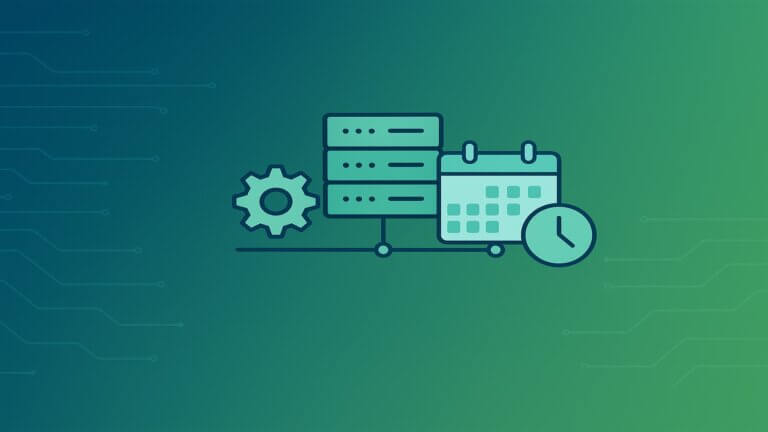In today’s cloud-driven world, choosing right EC2 instance type is a cornerstone for many businesses seeking flexible computing power with autoscaling and rightsizing. An AWS instance type defines the virtual hardware that hosts your applications, encompassing various configurations of CPU, memory, storage, and networking capabilities. Choosing the right instance type is crucial not only for ensuring optimal performance but also for achieving cost efficiency. The myriad of EC2 instance sizes and the diversity in types of EC2 instances available can make this choice daunting. Understanding what an AWS instance is and how each EC2 instance family is tailored for specific workloads is key to making an informed decision. This article will guide you through the complexity of selecting the best AWS instance type for your needs, emphasizing how thoughtful choices can lead to significant savings in AWS instance type cost.
Understanding AWS EC2 Instance Types
AWS EC2 instances are categorized into several families, each designed to cater to specific workload requirements. The General Purpose family, including instances like the T and M series, offers a balanced mix of compute, memory, and networking resources. These are ideal for applications with diverse resource needs, such as web servers and small databases. The Compute Optimized family, featuring the C series, is engineered for tasks that require significant computational power, such as high performance web servers and scientific simulations.

For applications that demand large amounts of memory, the Memory Optimized family provides instances like the R and X series, which are perfect for in-memory databases and big data analytics. The Storage Optimized family, represented by instances like the I and D series, is tailored for workloads requiring high disk throughput and low latency, making them suitable for databases and distributed file systems. Lastly, the Accelerated Computing family, including P and Inf series instances, incorporates GPU capabilities to accelerate graphics-intensive applications and machine learning workloads. EC2 instances are designed to offer unique instance types, allowing businesses to select the configuration that best fits their specific needs, thus optimizing performance and cost.
Assessing Your Workload Requirements
When choosing the right AWS EC2 instance type, it’s essential to assess your workload’s specific needs. The key factors to consider include CPU, memory, storage, and network requirements. For instance, if your application involves high computational tasks, such as data processing or real-time analytics, a Compute Optimized instance like the C series would be a suitable choice. These instances provide high CPU performance and are designed to handle intensive workloads.
Similarly, if your workload requires significant memory capacity, such as running large databases or memory-intensive applications, Memory Optimized instances like the R or X series would be ideal. These instances offer a higher ratio of memory to CPU, ensuring efficient handling of memory-demanding tasks. For workloads that rely heavily on data storage and retrieval, such as database management systems or data warehousing, Storage Optimized instances like the I series provide the necessary disk performance and low latency.
In cases where your application benefits from parallel processing and accelerated performance, such as in machine learning or graphics rendering, the Accelerated Computing family, including the P series, offers powerful GPU capabilities. By carefully matching your workload characteristics with the appropriate EC2 instance family, you can ensure optimal performance and manage AWS instance type costs effectively.

Choosing the Right EC2 Instance Size
Once you’ve identified the appropriate instance family, the next step is selecting the right instance size. Each EC2 instance family offers a range of sizes, such as nano, micro, small, medium, large, xlarge, 2xlarge and up to 48xlarge. Each provide varying combinations of CPU, memory, and storage, which doubles memory at each next size: e.g. t3.nano has 0.5 GB of memory, t3.micro – 1 GB, t3.small – 2 GB and so on. The key is to align your workload’s resource demands with an instance size that offers just the right amount of capacity and proper features — no more, no less.
For example, if you’re running a web server with moderate traffic, an m5.large instance might be sufficient. On the other hand, if you’re dealing with high-traffic applications or large-scale data processing, you might opt for an m5.2xlarge or larger instance. Right-sizing your instances ensures you’re not over-provisioning (which leads to wasted costs) or under-provisioning (which can cause performance bottlenecks).
Choosing the correct instance size allows you to optimize both performance and cost, ensuring your applications run smoothly without incurring unnecessary expenses. Regular monitoring and adjustments can help you maintain the right balance as your workload evolves.
Pricing Models and Options for chosen EC2 instance type
AWS offers several pricing models for EC2 instances, allowing users to tailor their cloud costs to their specific needs. The On-Demand pricing model provides the most flexibility, enabling users to pay for compute capacity by the hour or second without long-term commitments. This model is ideal for unpredictable workloads or short-term projects, as it allows for easy scaling up or down. However, it tends to be the most expensive option for long-term use.
Reserved Instances offer a significant discount compared to On-Demand pricing in exchange for a commitment to a specific instance type in a particular region for a one- or three-year term. This model is beneficial for stable workloads with predictable resource requirements, providing cost savings for long-term projects. On the downside, it lacks the flexibility to change instance types or regions without additional charges.
Spot Instances allow users to bid on unused EC2 capacity at potentially lower prices, making them a cost-effective option for flexible, fault-tolerant workloads. However, Spot Instances can be interrupted with little notice, so they are best suited for applications that can handle such interruptions, like batch processing or stateless web servers.
Lastly, Savings Plans provide a flexible pricing model offering lower prices on EC2 and other AWS services in exchange for a commitment to a consistent amount of usage over a one- or three-year term. Unlike Reserved Instances, Savings Plans are more flexible, allowing users to switch between instance families, sizes, and regions.
Choosing the best pricing model depends on your workload patterns and budget. For consistent, long-term workloads, Reserved Instances or Savings Plans can offer substantial savings. For short-term or unpredictable workloads, On-Demand instances provide the necessary flexibility. Spot Instances are perfect for cost-conscious users with workloads that can tolerate interruptions. Balancing these options based on your specific requirements will help you optimize costs while maintaining the performance and reliability of your applications.
Tools and Techniques for Cost Optimization
AWS provides a suite of tools designed to help users manage and optimize their cloud costs effectively. One of the key tools is AWS Cost Explorer, which offers a detailed view of your AWS spending. It enables users to analyze costs and usage patterns over time, identify trends, and forecast future expenses. With its customizable reports, you can drill down into specific services or cost categories, helping you understand where your money is going and identify opportunities for savings.
Another valuable tool is AWS Trusted Advisor, which provides real-time guidance to help you optimize your AWS environment. It offers recommendations across several categories, including cost optimization, security, and performance. For cost management, Trusted Advisor can suggest rightsizing instances, deleting unused resources, and taking advantage of more cost-effective pricing models like Reserved Instances or Savings Plans.
AWS Compute Optimizer is specifically focused on analyzing your Amazon EC2 instances and recommending the optimal instance types based on your actual usage. It assesses various factors, such as CPU, memory, and network utilization, to suggest downsizing, upgrading, or switching to a different instance family. This tool can help ensure that you are not over-provisioning resources, thereby reducing unnecessary costs.
To maximize the benefits of these tools, it’s crucial to regularly monitor your AWS environment and adjust instance usage as needed. Set up alerts for cost anomalies, review usage reports frequently, and take action on optimization recommendations. By staying proactive and leveraging these AWS tools, you can maintain an efficient, cost-effective cloud infrastructure that aligns with your business needs.
Best Practices for Cost Optimization
Achieving cost efficiency in AWS requires a strategic approach to managing resources. One fundamental strategy is right-sizing instances, which involves selecting the optimal instance size that meets your workload’s requirements without over-provisioning. By analyzing your applications’ performance metrics, such as CPU and memory utilization, you can identify underutilized instances and downsize them to more cost-effective options. This not only reduces costs but also ensures resources are used efficiently.
Implementing auto-scaling is another key practice that helps match resource allocation with demand. AWS Auto Scaling automatically adjusts the number of instances in response to real-time changes in workload, scaling out during peak times and scaling in during periods of low demand. This dynamic adjustment ensures that you only pay for the resources you need, optimizing costs while maintaining performance.
For workloads that can tolerate interruptions, leveraging spot instances is an excellent way to reduce expenses. Spot instances allow you to bid on spare AWS capacity at a lower cost, making them ideal for non-critical tasks like batch processing or data analysis. By using spot instances in conjunction with other instance types, you can balance cost savings with availability and reliability.
Finally, it’s crucial to regularly review and adjust Reserved Instances and Savings Plans. As your business needs evolve, so do your AWS usage patterns. Periodically assess your reserved capacity commitments to ensure they still align with your current and future requirements. If necessary, modify or exchange Reserved Instances and Savings Plans to better match your usage, thereby maximizing your savings.
By implementing these best practices, you can optimize your AWS costs effectively, ensuring that your cloud spending aligns with your budget and business goals.
In the ever-evolving landscape of cloud computing, selecting the right EC2 instance types is crucial for optimizing costs and ensuring efficient resource utilization. The variety of AWS instance types and pricing models offers businesses the flexibility to tailor their infrastructure to specific workload needs, balancing performance and cost. By understanding the characteristics and use cases of different EC2 instance families, you can make informed decisions that align with your operational requirements and financial goals.
However, cost optimization is not a one-time task. It requires continuous monitoring and adjustment to adapt to changing workloads and business needs. Regularly reviewing your instance usage, leveraging AWS cost management tools, and adjusting your strategies, such as right-sizing instances or utilizing spot instances, are essential practices for maintaining cost efficiency. By staying proactive and attentive to your AWS environment, you can maximize the value of your cloud investment and support the sustainable growth of your business.



